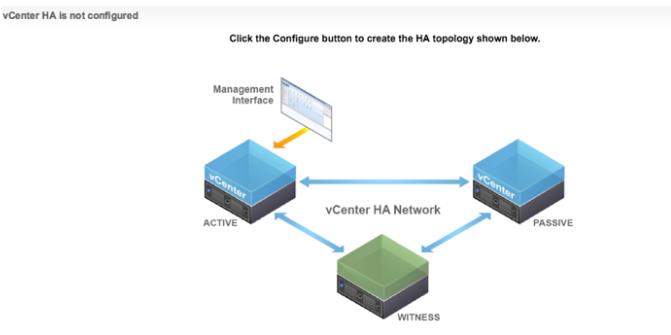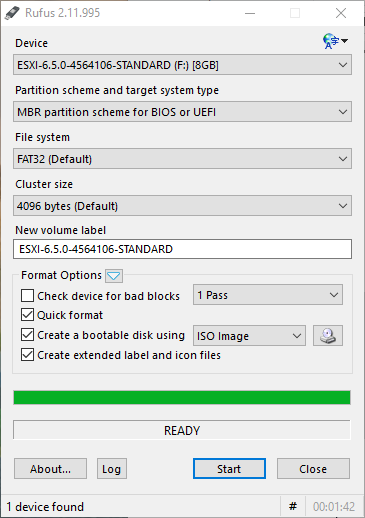-
Vsphere Keygen 6.5


Most Recent Megaposts. Subreddit Rules. Please see the for details on the rules, but the jist of it is:. Don't be an asshole.
VSphere adalah sebuah produk software suite dari beberapa produk yang isinya ada vmware ESXi, vCenter, vSphere Client, dll. Masih bingung?? Contohnya gini tau Microsoft Office kan? Nah di dalam microsoft office itu kan ada word, excel, powerpoint, dll, nahh si vSphere itu sama seperti Microsoft Office, kalo esxi, vcenter, dll itu sama kek word excel, powerpoint.
Post about your home lab, discussion of your home lab, questions you may have, or general discussion about transition your skill from the home lab to the workplace. No memes or potato images. We love detailed homelab builds, especially network diagrams!. Report any posts that you feel should be brought to our attention. Please flair your posts when posting. Please no shitposting or blogspam.
- Go to VMware vSphere Hypervisor (ESXi) 6.5 Download Page. Login or create an account. Register for ESXi (Enter some personal information) After registration, you will receive a unique license key and access to the binaries. If you already have an ESXi 6.0 license key, you don't need to sign up for a new key.
- May 3, 2018 - vSphere 6.7 has been released and as known from previous versions. If you already obtained a free key for ESXi 6.0 or 6.5 and you want to.
- Jun 4, 2018 - If you have setup VMWare ESX you will find that it defaults to the evaluation version giving you 60 days unlimited use. But, how to do you apply.
No Referral Linking. Keep piracy discussion off of this subreddit. All sales posts and online offers should be posted in.
Wiki. Before posting please read the wiki, there is always content being added and it could save you a lot of time and hassle. Feel like helping out your fellow labber? Contribute to the wiki! It's a great help for everybody, just remember to keep the formatting please.
Discord. We have an official, partnered Discord server which is great for all kinds of discussions and questions, invite link is clickable button at the top of the sidebar. Come and say hello! Related Subreddits. Our original home. Splintered off from this sub-reddit. Enterprise networking.
Talk of anything to do with the datacenter here. Learn Powershell!. Newbie friendly place to learn Linux!
All experience levels. Try to be specific with your questions if possible. All flavors of Linux discussion & news - not for the faint of heart!. For Linux Sysadmins. For sales on building a PC.
Used hardware, swap hardware. Might be able to find things useful for a lab.
for all things pfsense ('nix firewall). Simpler networking advice. Automate your life. Any ideas with the error I got below? I ran the commands with SSH one by one. InstallationError Failed updating the bootloader: Execution of command /usr/lib/vmware/bootloader-installer/install-bootloader failed: non-zero code returned return code: 1 output: ERROR: ld.so: object '/lib/libMallocArenaFix.so' from LDPRELOAD cannot be preloaded: ignored. Traceback (most recent call last): File '/usr/lib/vmware/bootloader-installer/install-bootloader', line 28, in import vmkctl MemoryError vibs = VMwarebootbankesx-base6.5.0-1.
Thanks in advanced.
VMware vSphere 6.5 brings also VM encryption. VM encryption will work by applying a new Storage policy to a VM.
It is Policy driven. You'll be able to encrypt the VMDK and the VM home files. There is no modification within the guest OS. It does not matter which OS you're running (Linux, Windows, DOS, iOS) or on which storage the VMs files are located (NFS, block storage, VSAN.). The encryption is happening outside of the Guest OS. The guest does not have an access to the keys.

The encryption works also for vMotion but both the source and the destination hosts must support it. We'll see the settings later in this post. It will get a key from the default key manager.
It will be per-VM policy application model. It is easy to manage and also scalable. The example within vSphere Web client bellow – apply encryption policy to two sample VMs VM encryption – How it works? You have an encrypted VM after you have applied an encryption policy too.
Then, a randomly generated key is created for each VM, and that key is encrypted with the key from the key manager. When you power On the VM which has the Encryption Storage policy applied to, vCenter retrieves the key from the Key Manager, sends that down to the VM encryption Module and unlocks that key in the ESXi hypervisor. So all IO coming out from the virtual SCSI device goes through the encryption module before it hits the storage module within the ESXi hypervisor. All IO coming directly from a VM is encrypted. The workflow on activating the VM encryption would look like this: To Decrypt a VM?
You may ask: How do I decrypt a VM then? It is very simple. By changing the Storage Policy back to a Datastore default. The VM's files, the VMDKs will be decrypted.
PowerCLI anyone? Yes, there will be a PowerCLI cmdlet which will be able to apply a policy, but also to report on which VMs are currently encrypted. You'll be able to encrypt VMDKs only, OR also The VMs home files. Who Manages encryption? It is not vCenter server, which is only a client. The 3rd party Key management Server (KMS) is the one responsible for the encryption of the key and the management.
With that you may ask who will be able to manage encryption of your VMs? Does all your vSphere admins needs to have access to encryption? But possibly NOT. VMware has created a new default role ” VMware has created a new default role “ No Cryptography Administrator“. You'll find this new role within the Roles, as usually. The new role will have still all the other privileges like a “standard” admin, but less the Encryption rights.
There Power ON, Off, shut down, vMotion etc No operations like:. Manage key servers.
Manage keys. Manage encryption policies. No console access to encrypted VMs. No upload/download encrypted VMs All permissions are customizable. And perhaps there are some gotchas?
VMware vSphere 6.5 VM encryption – The gotchas! What are the gotchas? Yeah, there might be some. And they are, at least in v1.0 of the feature. Hum tum full movie 2004.
The default KMS isn't from VMware – yes, this might be a showstopper for some. But there are many other KMS managers out there and VMware vSphere will be able to use those other KMS managers for the job. SAN Backup not supported – backup proxy backup type is supported but the backup proxy appliance has to be encrypted, and also the user account which is performing the backup has to have the Cryptographer.DirectAccess permission. Backup data is not backed up encrypted – the backup solution may provide its own encrypted mechanism. After restoring you have to have a policy in place to re-encrypt the restored VM. vCenter cannot be encrypted – At least on the same infrastructure.
Logical, as, if vCenter cannot start-up and get the keys, then you're kind of in trouble. Not supported – some things are unsupported:. Suspend/resume. Encrypting VM with existing snapshots (if VM is already encrypted, you can't created snapshot).
Serial/Parallel port. Content library. vSphere Replication A Key management protocol 1.1 has to be implemented in order for the Key manager to be compatible with vSphere 6.5. Here is a list (not exhaustive) of the principal key managers supported. Encrypted vMotion There are 3 settings which are possible on the per-VM basis:. Disabled – do not use encrypted vMotion.
Opportunistic – use encrypted vMotion if source and destination hosts support it. If not it will do a normal vMotion. Required – allow only encrypted vMotion. If the source or destination does not support encrypted vMotion, then the vMotion fails.
How the encrypted vMotion works? The randomly generated key is created and added to the migration spec. Then pushed to each hosts participating in the vMotion process, where the data going across the network are encrypted with the randomly generated key only for the migration process. It is one-time generated random key, which is generated by vCenter (not the KMS). VSphere Encryption looks pretty good by adding an additional layer of security to your data, but things should be discussed first. Who has and who has not the rights to encrypt VMs? How to proceed when the admin leaves the company?
How to proceed when the admin account (with rights to encrypt) password is lost? Then everything shall be thoroughly tested first, starting with simple (not production VMs). Keep in mind that this is a v 1.0 feature and that there can be some gotchas VMware vSphere 6.5:. VMware vSphere 6.5 – VM Encryption Details – This Post. Check our for ALL details about new announces and releases. This website is maintained.
Vladan is as an Independent consultant, professional blogger, vExpert 2009 - 2018, VCAP-DCA/DCD, VCP. ESX Virtualization site has started as a simple bookmarking site, but quickly found a large following of readers and subscribers. Visiting Indian Ocean and Reunion Island? My wife Nicole and I just opened our B&B with private jacuzzi. Check it out! AloeveraBeach - Rent a Flat 300m from the beach. Capacity 4 pers.
Feel free to network via Twitter.

